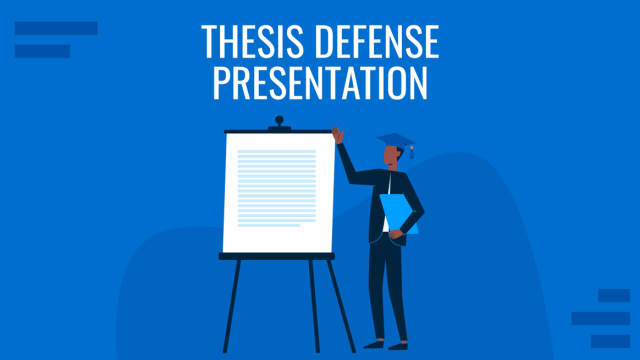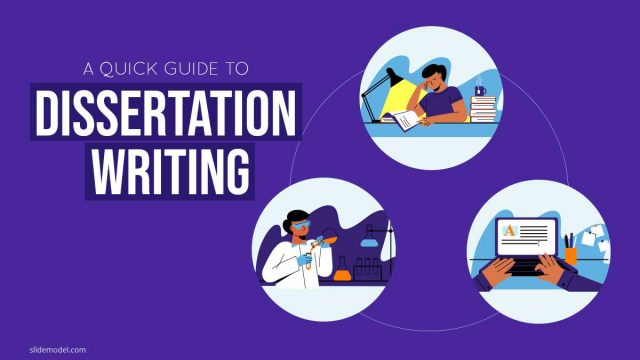
Learning is no longer confined to merely brick and mortar schools where students are confined to whatever is taught by the teacher. It is now common for students to reach out to multiple sources, especially via the Internet to enhance their perspective regarding a topic. Even modern teachers opt for combining a variety of teaching methods to teach students, including using blended learning models.
What is Blended Learning?
Blended learning is a teaching method by which online educational content is blended with traditional teaching approaches. While it requires the teachers and students to be physically present, computer-mediated activities are combined to blend the learning experience for students, with the students having some control over the time, pace and place of the classes.
Blended learning is not only used for educational purposes but also for professional training. Different models of blended learning combine various levels of content delivery and interaction via digital mediums. The main purpose of blended learning is to provide a better teaching experience. In some cases, blended learning can also be seen as a more personalized method of teaching for better learning outcomes.
Blended Learning Models
There is a wide variety of blended learning models that allow different modes of content delivery and learning practices. Generally, there are six models that researches have pegged under the domain of blended learning.
Face-to-Face Driver
This model is used by teachers to drive instructions through digital mediums. The teacher is responsible for delivering most of the curriculum, while employing the help of digital tools to provide online learning resources to students. The teacher might use a lab or make learning content available online for students to learn from. The teacher can assign tasks via digital platforms to account for any knowledge gaps, provide new learning exercises or to reinforce lessons.
The face-to-face driver model might be used for an entire classroom or for a group of struggling students to help them in improving learning outcomes.
Implementing the Face-to-Face Driver Model: In order to implement the face-to-face driver model, teachers can use learning management systems or platforms such as Microsoft Teams or Yammer to share and assign tasks to their students. The school might even have their own customized platform, such as a learning management system which can be used for this purpose. At a bare minimum level, teachers can even make use of services as common as Google Drive or Office 365 to create and share educational content and allow online collaboration between students.

Rotation
This model includes the teacher rotating students between classroom lectures and online learning time. Students receive a lecture and then get some time to online work. The teacher can assign students some reading time, online tasks or digital exercises during their rotation time. Many times teachers rotate time in a similar way by assigning students certain classroom tasks after a lecture. For example, primary school students are often tasked with writing an essay or completing a math problem during the class, work in groups on a project, etc. The rotation model simply takes this type of rotation to digital platforms.
Implementing the Rotation Model: The rotation model can be subdivided further into various modes of content delivery and learning. Station rotation might entail small group projects, individual tutoring and group instructions, whereas lab rotation might include students rotating to a lab for learning. Similarly, the teacher might use the flipped classroom approach by assigning students online learning tasks after school hours for lessons that are to be studied the next day in class. Another form of rotation is the individual rotation model, which includes the teacher setting individual time for students to rotate between learning modalities.
Teachers can make use of anything from YouTube videos to readings assigned via online sources or interactive applications to use the rotation model, be it within the classroom or for afterschool learning via the flipped classroom model.
Flex
In order to allow people with a busy lifestyle or individuals in remote areas to acquire degrees, many countries have set up what can be described as virtual universities. This is pretty much the flex model, where the majority of the content is delivered via digital platforms, with face to face support for students. This might include a university offering online learning, with the option for students to visit during working hours or specified time for further help from the faculty.
Implementing the Flex Model: This model requires comprehensive digitization of the learning curriculum. Experts or teachers can be hired to record class lessons and tasks can be assigned via learning management systems and other digital mediums. Students can have face to face interaction with teachers at designated times. Such an educational institute might even offer computer-based and self-learning facilities to students who might wish to visit the premises regularly, as well as optional classes with the physical presence of the teachers. Some institutes which can be described as falling under the flex model include; University College London, The University of Edinburgh, American College of Healthcare Sciences, and American College of Education.
Online Labs
Online labs require delivering the whole curriculum using digital platforms with some physical presence of the classrooms. This model usually also includes traditional classes. This model might be implemented in rural and remote areas where minimum teacher supervision might be used for teachers to learn using online platforms.
Implementing Online Labs Model: Some developing countries have even hired the help of remote learning educational institutes to offer classes to children in remote and mountainous areas via the Internet, where courses are delivered remotely via teachers with some underqualified local teachers assist the children. One example is the remote learning initiative by Elementary and Secondary School Foundation of the Khyber Pakhtunkhwa province in Pakistan which has setup similar classes for children from the native tribes living deep in the Hindukush mountains known as the Kalasha Valleys.
Implementing this model might be expensive, depending upon the requirements of the students and the type of learning offered. For remote and rural areas, equipment malfunctions can be a major hassle and students might not have frequent access to the Internet.
Self-Blend
This model is appealing for students looking to learn outside conventional classes. Many e-learning business models are based on this concept. Some examples include; Lynda and Nugget Lab, both of which provide a series of premium courses that subscribers can learn from via informative videos. This model is commonly used in the IT industry, where IT professionals opt for relevant courses to pass IT-related certifications such as CCNA, CCSP, CCNP, CCIE, MCSA, etc. Other than professionals, students too can benefit from this model by opting for online courses that best suit their needs.
Implementing Self-Blend Model: Organizations that have successfully implemented such a model have vast archives of tutorials and testing material created with the help of expert professionals. These organizations hire experts from specific fields and create tutorials and tests that are then offered in the form of various packages to subscribers via their website. To implement the self-blend model an organization or individual might require access and knowledge of recording videos, screencasts, video editing, etc. There might also be a need to create virtual labs that can be used to run simulations for recording videos and showing a specific process in the video. For example, a computer course based on a new Microsoft Server might require showing the process of setting up the server, as well as connecting it to various physical or virtual computers.
Online Driver
Similar to the self-blend model, this model involves online courses where the entire course is completed online. Sometimes there might be teachers checking in on students during the lessons, however, the entire process of learning is executed via online learning tools. In some cases, face-to-face meetings might also be scheduled.
Implementing the Online Driver Model: This model can be implemented similar to the self-blend model, were interactive, and video-based lessons can help students learn. Some international organizations offer free online courses where a student interacts with an ongoing storyline to learn about a specific topic. At the end of the course, the individual is presented with a printable certificate with their name. Many premium courses are offered in a similar way by using digital learning tools video-based lessons and web applications.
Recommended Reading: 70-20-10 Model for Learning and Development
Advantages and Disadvantages of Blended Learning
Advantages of Blended Learning
Blended learning offers a wide variety of advantages which can help improve the capacity of individuals and enable them to learn new skills with ease.

Improved Learning Outcomes: The individual can learn outside boring conventional classes with a variety of digital tools which can improve learning outcomes.
Flexibility: Blended learning often provides the flexibility to make use of a number of online resources at a time and place of convenience for the student. People who have a regular job can often benefit from this flexibility to acquire new skills or to complete a degree.
Cost-Effective: Many blended learning courses delivered through online sources are usually cheaper than regular classes at a physical classroom. This is because such courses minimize costs and enable learning at convenient times through remote mediums.
Customized Courses: Many times students can opt for customized courses according to their learning needs. This allows them to select courses which can help fill knowledge gaps and improve their learning of specific topics only. During an online course, one can also skip parts for which there is conceptual clarity and focus on the topics that need more attention.
Access to Experts: Many people living in remote or rural areas or from other countries can benefit from the best teachers from a specific field via online courses. For example, someone willing to take an online course to learn from someone who has expertise in Microsoft based operating systems in the United States can benefit remotely from their home country via an online course.
Personalization: Whether you’re taking an interactive course or watching a video lesson, there is an element of personalization in blended learning which really helps. For example, you can always rewind a video to go back to what you missed.
Disadvantages of Blended Learning
Blended learning is not without pitfalls and might not be suitable for all kinds of students.
Lack of Access to a Real Teacher: In some cases, access to a real teacher can be quite helpful in learning a subject. This can be scarce in the case of most blended learning models. Moreover, some students might require urgent answers for which a teacher might not be available. For example, if you were to take an online course and have your exam the next day, the only mechanism to access the teacher other than informative videos might be via email or a Q&A mechanism which might not get you the required answer any time soon.
Boring Courses: All blended learning courses are not necessarily engaging and interesting and that can leave you unmotivated and bored. Maintaining attention when no one is keeping you attentive (e.g. a real teacher) can be a challenge. This is because not everyone is as self-motivated as blended learning courses usually demand.
Need for Physical Resources: Some subjects require access to a lab or a teaching environment where one can practically examine and learn concepts. This is particularly true for many science subjects like chemistry, biology and engineering. Lack of access to physical resources might mean that you have a degree but not a real experience.
Complicated Digital Tools and Applications: Not everyone is all that tech-savvy. This might mean that many people might find it hard to use the required digital tools and applications for learning via blended learning.
Access to Internet: Since blended learning requires online access, many remote and rural areas, especially in developing countries might not be able to benefit from a stable Internet connection. This might make blended learning difficult for students who are housed in areas with harsh climatic conditions and a weak communications infrastructure.
Credibility: Many online courses might be plagued by plagiarism and lack of credibility. Many online courses and degrees acquired from such institutes is sometimes frowned upon my employers and might not be sufficient to land you a good job.
Blended Learning in a Nutshell
Here is a brief video that explains blended learning in a nutshell.
Final Words
Blended learning offers a whole new world of learning opportunities and career advancement. Many people from various fields use blended learning courses to learn new skills, fill knowledge gaps, and to improve their knowledge regarding changing trends in their line of work. However, blended learning isn’t necessarily the best option for everyone. There will always be students who find a physical classroom more engaging or subjects which might be best learned with some physical experience. Blended learning as a tool to aid existing learning practices can in fact be far more beneficial than merely relying on blended learning classrooms alone. At the end of the day, it is the hands-on experience that will make you a true expert at your job and not all blended learning models provide that.



Blended learning seems to be good for group activities and will definitely involve more participation of students(Projects,solving a problem sharing ideas )
Very useful information and very crispy presented .